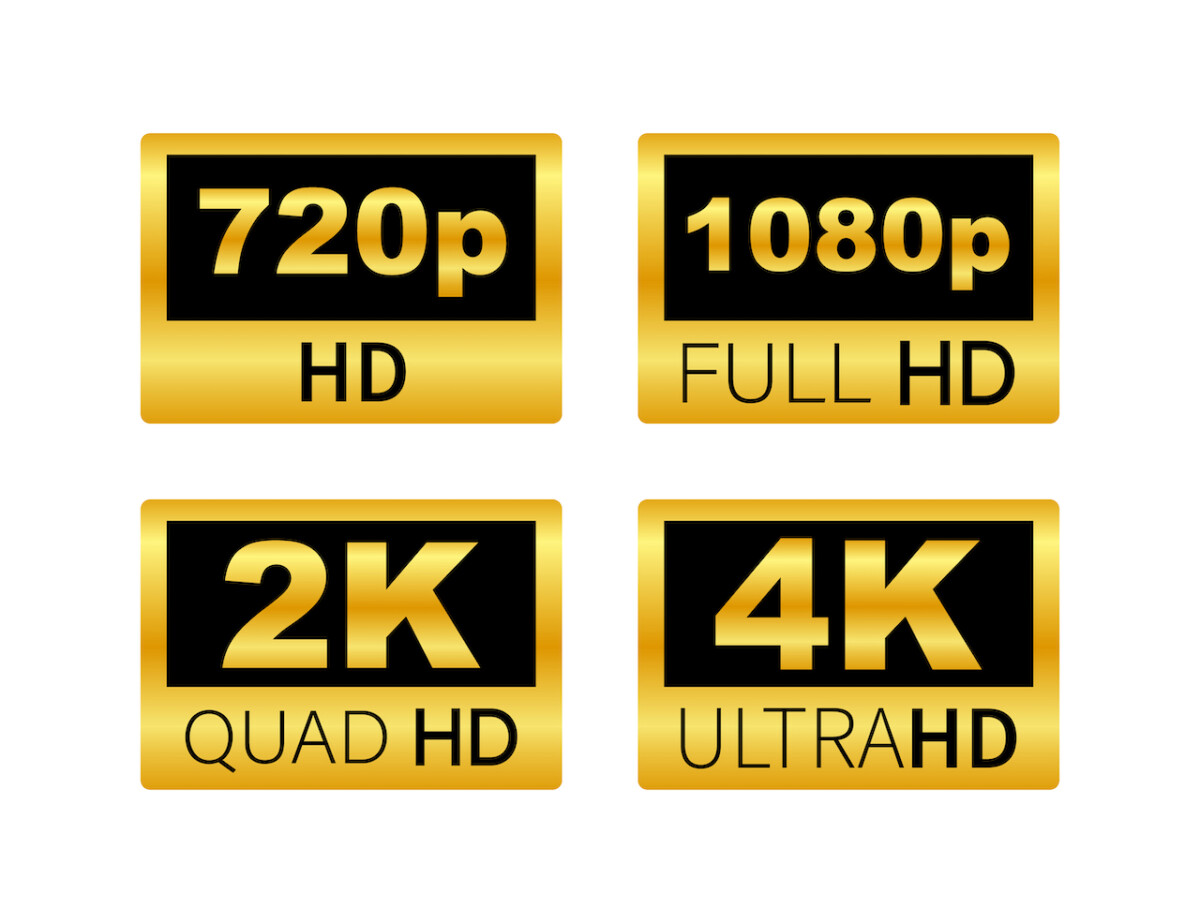
High-definition video is a standard within the event production industry. But what could be better than seeing and experiencing even clearer video at your next meeting or event?
Because more is always better, right?
Like so many things in life, less is more. And video quality is no different.
What we know as TV buyers colors what we know about the wide array of high-definition video available. Think about what higher resolution video has done for your living room. You went from an almost square, heavy cathode-ray tube (CRT) TV with mediocre pictures, to a flat, light weight wide screen with brilliant images.
So how detailed is your TV’s picture? That’s dictated by the number of pixels it has, also referred to as screen resolution.
Before the advent of high definition, the typical TV was a box with an aspect ratio of 4:3 and a resolution of 480.
Now, enter the now very familiar rectangular TV screen. It has an aspect ratio of 16:9.
The pixel count of your first hi-def flat screen TV was likely 720p, delivering 1,280×720 (horizontal x vertical) pixels. By way of definition (the dictionary kind) a single pixel, or discrete picture element, consists of a tiny dot on the screen. That early set had about a million pixels.
Resolution has since increased over the years. Most flat screen monitors of any size made today are 1920×1080, or a bit over two million pixels.
But there are TVs that deliver far denser pictures comprised of up to 8 million pixels. These are 4K Ultra HD (UHD) sets. Then there are the 8K units with their whopping 33 million pixels.
You can see the basic progression here:
| Resolution name | Horizontal x vertical pixels | Common names |
| 8K | 7,680×4,320 | 8K UHD |
| “Cinema” 4K | 4,096x[unspecified] | 4K |
| UHD | 3,840×2,160 | 4K, Ultra HD, Ultra-High Definition |
| 2K | 2,048x[unspecified] | None |
| WUXGA | 1,920×1,200 | Widescreen Ultra Extended Graphics Array |
| 1080p | 1,920×1,080 | Full HD, FHD, HD, High Definition |
| 720p | 1,280×720 | HD, High Definition |
There is so much talk about 4K. It’s the new standard for TV resolution. but only if the source media (live TV, streaming media, physical media, video games, etc.) is also 4K. If not, 4K TVs will play the media in its original resolution, either standard- or high-definition.
Even with that provision, it stands to reason that, like in the home, the event space should be delivering images in 4K. Right?
Well, not quite.
First, let’s discuss what 4K is. 4K is 4,096 lines of horizontal resolution, as set by the Digital Cinema Initiatives. This is because movie theatre screens vary in shape and don’t stipulate vertical resolution.
For consumers, 4K Ultra HD TVs deliver 3840×2160 pixels and have a somewhat lower resolution. But it’s accepted technology jargon among TV makers to call these screens 4K.
So what does all this mean in event production? Don’t look for consumer TV level resolution for your next meeting.
There are two very good reasons why: equipment and content.
Most projectors used at live corporate and meeting events are 1920×1080 resolution. The industry is fixed here for the time being. It’s not because 4K equipment isn’t available. It’s because the content hasn’t kept pace.
Presenters create and bring in their own stuff on PCs and laptops, most of which is generated and output in 2K or less. Event production companies don’t always get to dictate screen resolution. So, we work with what we’re given and deliver visually pleasing results.
Furthermore, not everyone is invested in 4K… yet. Many equipment wholesalers carry a majority of 1920×1080 projectors in their rental stock. Because they know how the content is generated.
Also, the equipment required to project 4K content is massive. A few companies do make 4k projectors in the 7500 to 15,000 lumen range. But they’re big. Typical projectors sit on the larger side of the spectrum, such as 20,000 lumen brightness and up to 50,000 lumens. This makes them costly with limited availability.
Using this lower powered gear has one big advantage: it saves money. Event planners aren’t paying a huge premium for something that will not deliver an image with no discernable difference or that is necessary based on the content. And, with hybrid events, chances are common downloads are compressed to 2K.
Even if the content was close to 4K, in most cases the delivery of the signal carrying the presentation would be throttled down as the streaming bandwidth required would be costly.
Now, that’s not so say there is not a place for actual 4K and 8K content right now. We can imagine companies at trade show booths would foot the expense to wow booth visitors via sparkling graphics and video. At conferences, an LED wall could support true 4K and 8K content.
Our advice is this: stay practical. Don’t get drawn in by wanting the latest and greatest in equipment capability. That’s all it is. While the technology is capable of greater definition, it doesn’t mean the rest of the industry can currently support it economically.